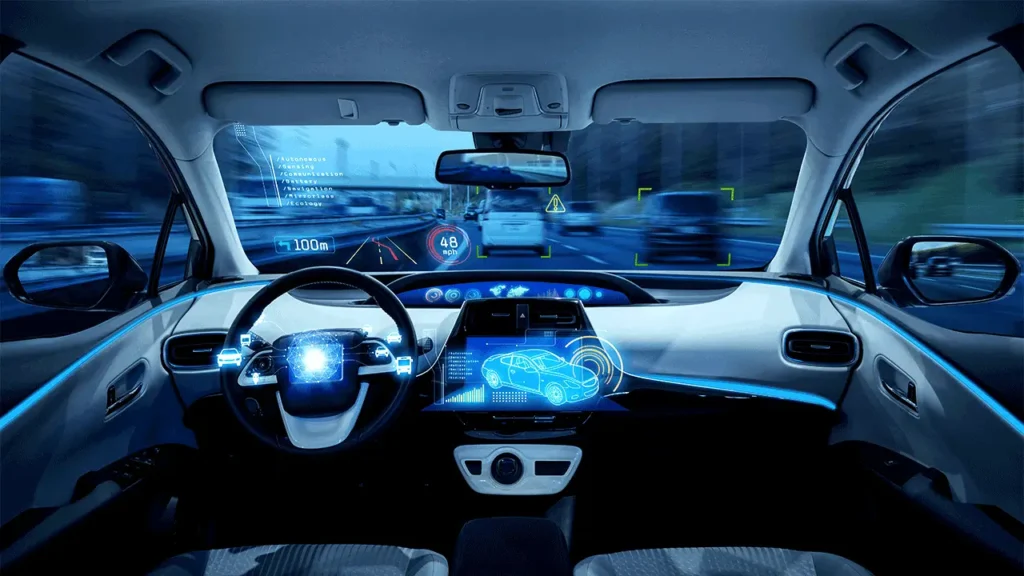In 2025, cars are no longer just machines with engines—they’re intelligent, adaptive systems on wheels. With the help of artificial intelligence (AI), vehicles are learning to understand their surroundings, communicate with other machines, and even make decisions in real-time. From self-driving features to predictive maintenance, AI innovations are transforming how we drive, maintain, and experience cars.
This year’s advancements are particularly impressive, and this guide reveals the Top 10 AI innovations in cars that are making a real difference today.
Introduction: AI’s Accelerating Role in Automotive Tech
The automotive industry is one of the fastest adopters of artificial intelligence. In 2025, AI is now integrated into every layer of vehicle technology:
- 🚗 Enhancing safety with real-time alerts
- 🔋 Optimizing battery and fuel efficiency
- 🧠 Making vehicles autonomous and predictive
- 🗣️ Personalizing the driving experience
This rapid progress is pushing the industry toward a fully connected and intelligent mobility ecosystem.
1. Full Self-Driving (FSD) Expansion
AI-powered Full Self-Driving technology has seen massive expansion in 2025. Companies like Tesla, Waymo, and Cruise have:
- Deployed autonomous fleets in select cities
- Enabled FSD beta features in consumer vehicles
- Improved safety with real-time AI decision-making
AI systems now use vision-only navigation, deep learning models, and sensor fusion to handle urban, highway, and even off-road scenarios with minimal human input.
2. Predictive Maintenance with AI Analytics
AI systems analyze real-time sensor data from every component of the vehicle, including:
- Engine performance
- Brake condition
- Battery health
- Tire pressure and wear
The system alerts drivers before issues occur, reducing breakdowns and extending vehicle life. Fleet owners benefit especially from AI-powered dashboards that track vehicle health across entire fleets.
3. AI-Based Driver Monitoring Systems
Driver safety goes beyond external threats. AI now tracks behavior inside the cabin to detect:
- 😴 Drowsiness
- 📱 Phone distraction
- 🚬 Smoking or unusual behavior
With in-cabin cameras and facial recognition, AI systems provide real-time warnings or even suggest breaks when they detect signs of fatigue or stress.
4. Real-Time Adaptive Cruise Control
Today’s AI cruise control systems don’t just maintain a set speed—they:
- Adapt to road conditions
- Anticipate braking needs
- Maintain optimal distance from other vehicles
Using radar, camera vision, and deep learning, they adjust for lane shifts, stop-and-go traffic, and even slippery roads, making highway driving safer and more efficient.
5. Smart Lane Changing and Merging Assistance
AI-enhanced lane change systems now offer:
- 🔍 Blind spot monitoring
- 📐 Trajectory prediction
- 💡 Driver intent estimation
These systems evaluate not just the current situation but also predict how other vehicles may respond, making merging and lane changes smoother and less stressful.
6. AI-Powered In-Cabin Personal Assistants
AI voice assistants have evolved into intelligent in-cabin companions. They can:
- Answer questions
- Control climate and lighting
- Offer route suggestions
- Learn your preferences over time
These assistants use natural language processing (NLP) and machine learning to make the experience personal, hands-free, and conversational.
7. AI for Energy Efficiency and Battery Management
Electric vehicles (EVs) benefit greatly from AI’s ability to:
- Optimize charging schedules
- Adjust battery output based on terrain and weather
- Reduce wear through smarter regenerative braking
This ensures longer range, better performance, and lower lifetime operating costs.
8. Voice-Controlled Driving Features
Beyond assistants, AI voice recognition now controls:
- Navigation commands
- Window and seat adjustments
- Entertainment systems
- Emergency functions
Multilingual support and accent-tolerant AI models make this tech accessible to drivers worldwide.
9. Advanced AI Parking Systems
AI takes the stress out of parking with:
- 360° camera systems
- Memory-based garage navigation
- Self-parking into tight spaces
These systems use vision and ultrasonic AI fusion, remembering parking layouts and adjusting to new environments in real-time.
10. Vehicle-to-Everything (V2X) Communication with AI
AI facilitates real-time communication between vehicles and:
- Traffic signals
- Pedestrian zones
- Emergency response centers
This tech reduces traffic jams, prevents collisions, and improves city-wide traffic flow through predictive coordination.
Automaker Highlights: Tesla, BMW, Mercedes, Rivian
Several leading manufacturers are at the forefront of integrating AI into their 2025 vehicle lineups:
🚗 Tesla
- Continues to lead in vision-based autonomous systems
- Expands the use of Dojo supercomputers for training real-time neural nets
- Enhances driver assistance features through frequent OTA updates
🚙 BMW
- Focuses on predictive safety systems and adaptive cruise control
- Integrates AI assistants that learn driver routines
- Expanding use of AI-based personalization for in-cabin comfort
🚘 Mercedes-Benz
- Leverages its MBUX system for natural voice interaction
- AI manages seat ergonomics, lighting, and navigation cues
- Showcased advanced Level 3 driving capabilities in premium models
🛻 Rivian
- Uses AI for terrain-aware off-road driving
- Implements smart battery management for adventure and long-distance trips
- Prioritizes fleet-wide AI tools for delivery and logistics optimization
These brands are setting the standard for what AI can achieve in real-world automotive environments.
Future Outlook: What’s Next in Car AI?
Looking beyond 2025, the next wave of innovations includes:
- Neural processing units (NPUs) in vehicles for faster on-device AI
- Collaborative AI learning across fleets for improved shared intelligence
- Digital twins of cars for virtual diagnostics and upgrades
- Smart city synchronization, where cars adapt to urban AI grids
We’re headed toward a world where cars think, adapt, and collaborate, making traffic safer, driving smarter, and ownership more efficient.
Conclusion
In 2025, AI is no longer a futuristic add-on—it’s a core component of modern driving. From self-driving features and predictive safety to personal assistants and energy optimization, AI is making cars smarter, safer, and more intuitive.
The top 10 AI innovations in cars this year prove that the industry is not just evolving—it’s undergoing an intelligent transformation. As technology continues to accelerate, one thing is clear: the smartest drivers on the road are now assisted by even smarter machines.


